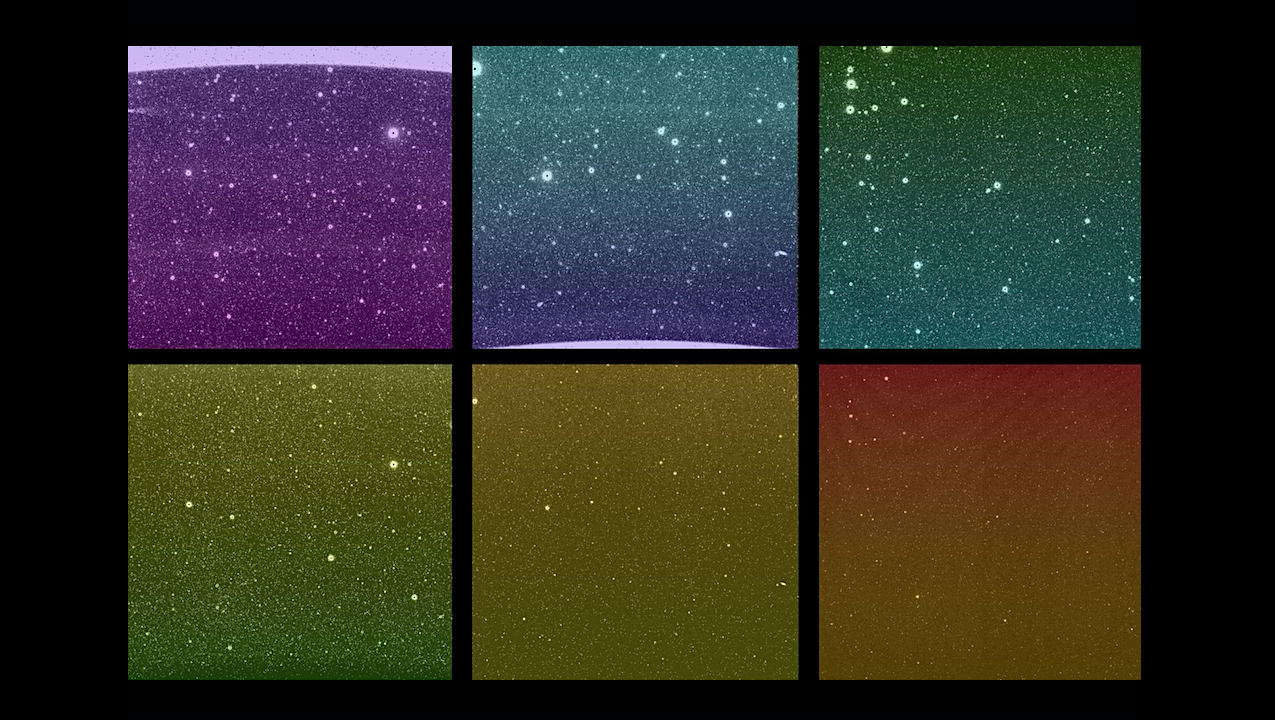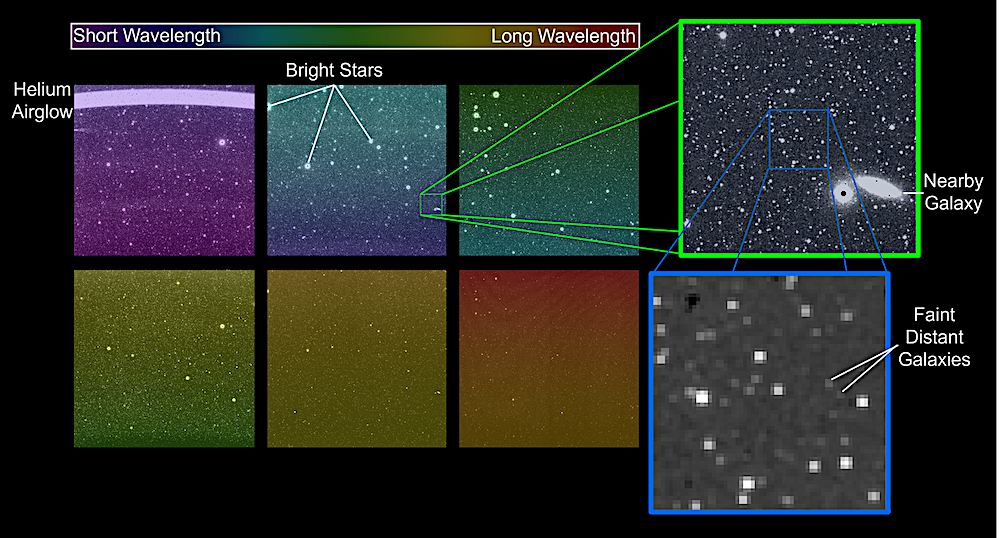
NASA’s SPHEREx, which will map hundreds of millions of galaxies across the entire sky, captured one of its first exposures March 27. The observatory’s six detectors each captured one of these uncalibrated images, to which visible-light colors have been added to represent infrared wavelengths. SPHEREx’s complete field of view spans the top three images; the same area of the sky is also captured in the bottom three images. Credit: NASA/JPL-Caltech
Processed with rainbow hues to represent a range of infrared wavelengths, the new pictures indicate the astrophysics space observatory is working as expected.
NASA’s SPHEREx (short for Spectro-Photometer for the History of the Universe, Epoch of Reionization and Ices Explorer) has turned on its detectors for the first time in space. Initial images from the observatory, which launched March 11, confirm that all systems are working as expected.
Although the new images are uncalibrated and not yet ready to use for science, they give a tantalizing look at SPHEREx’s wide view of the sky. Each bright spot is a source of light, like a star or galaxy, and each image is expected to contain more than 100,000 detected sources.
There are six images in every SPHEREx exposure — one for each detector. The top three images show the same area of sky as the bottom three images. This is the observatory’s full field of view, a rectangular area about 20 times wider than the full Moon. When SPHEREx begins routine science operations in late April, it will take approximately 600 exposures every day.

_Each image in this uncalibrated SPHEREx exposure contains more than 100,000 detected sources, including stars and galaxies. The two insets at right zoom in on sections of one image, showcasing the telescope’s ability to capture faint, distant galaxies. These sections are processed in grayscale rather than visible-light color for ease of viewing. Credit: NASA/JPL-Caltech_
“Our spacecraft has opened its eyes on the universe,” said Olivier Doré, SPHEREx project scientist at Caltech and NASA’s Jet Propulsion Laboratory, both in Southern California. “It’s performing just as it was designed to.”
The SPHEREx observatory detects infrared light, which is invisible to the human eye. To make these first images, science team members assigned a visible color to every infrared wavelength captured by the observatory. Each of the six SPHEREx detectors has 17 unique wavelength bands, for a total of 102 hues in every six-image exposure.
Breaking down color this way can reveal the composition of an object or the distance to a galaxy. With that data, scientists can study topics ranging from the physics that governed the universe less than a second after its birth to the origins of water in our galaxy.
“This is the high point of spacecraft checkout; it’s the thing we wait for,” said Beth Fabinsky, SPHEREx deputy project manager at JPL. “There’s still work to do, but this is the big payoff. And wow! Just wow!”
During the past two weeks, scientists and engineers at JPL, which manages the mission for NASA, have executed a series of spacecraft checks that show all is well so far. In addition, SPHEREx’s detectors and other hardware have been cooling down to their final temperature of around minus 350 degrees Fahrenheit (about minus 210 degrees Celsius). This is necessary because heat can overwhelm the telescope’s ability to detect infrared light, which is sometimes called heat radiation. The new images also show that the telescope is focused correctly. Focusing is done entirely before launch and cannot be adjusted in space.
**Related links**
Astrobiology, Astrochemistry, Astronomy,